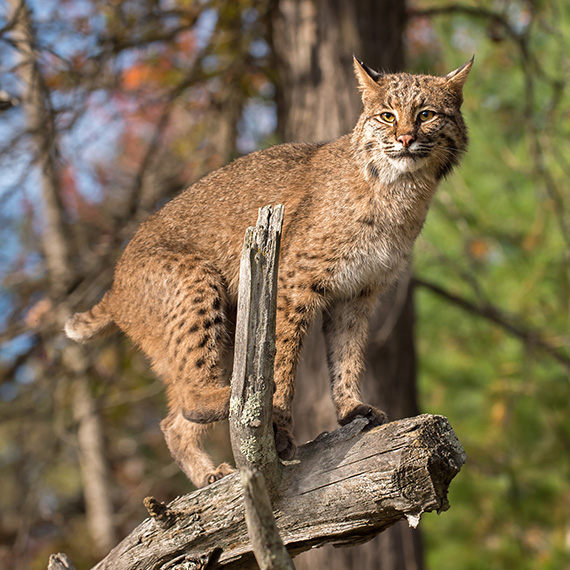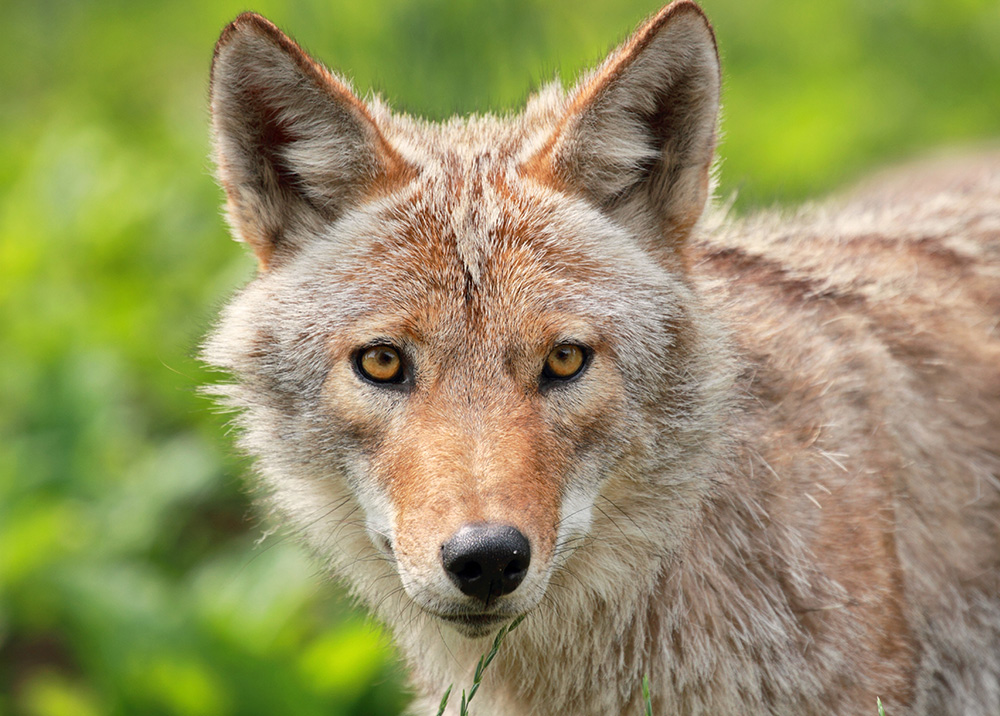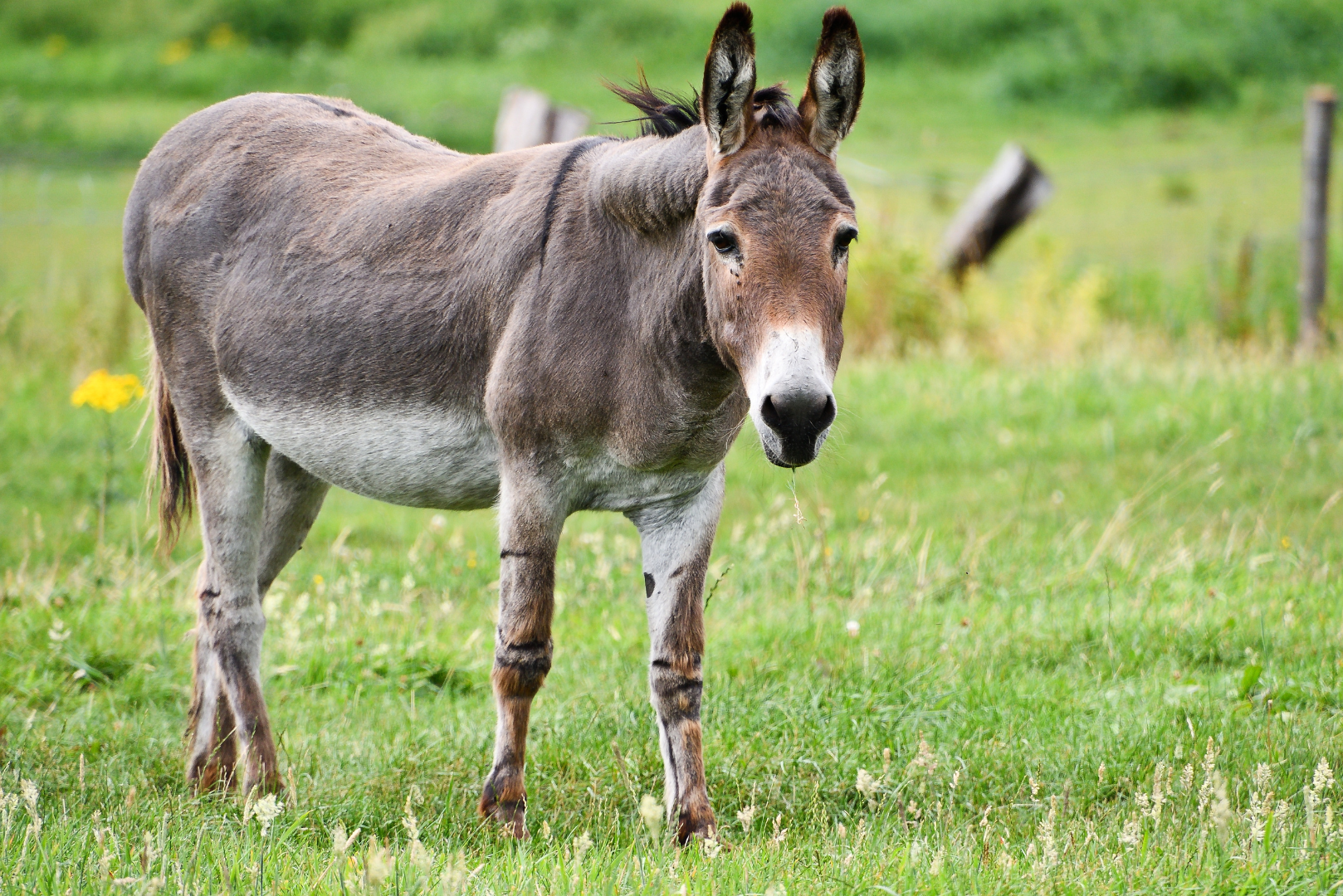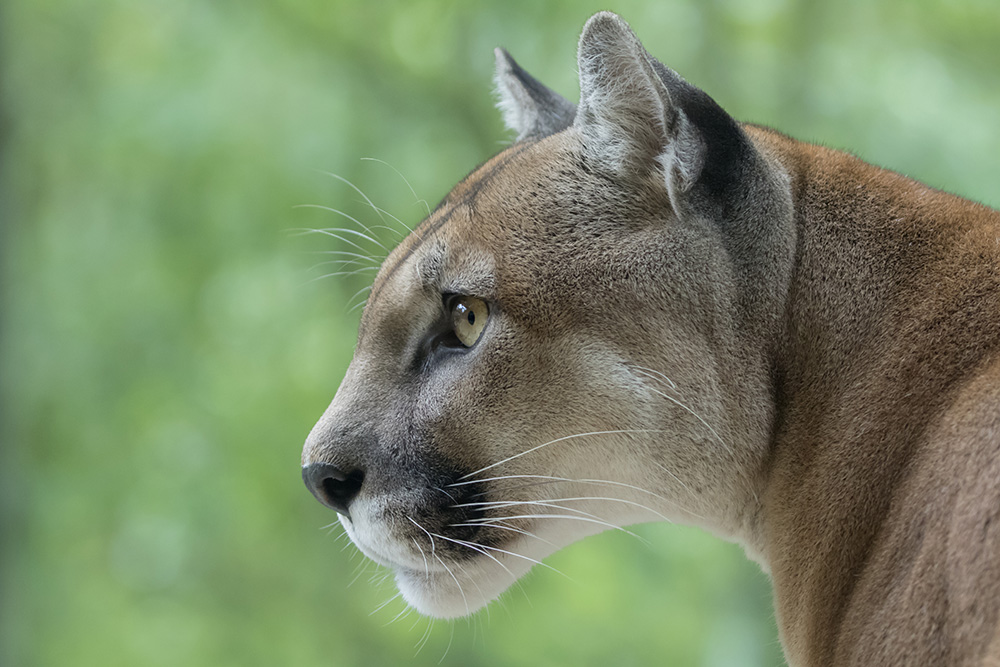Living With Wildlife

One of the benefits of living in San Bernardino County is the diverse landscape that provides a rich ecological terrain teeming with wildlife. It can be enjoyable to see wild animals, but it can also be dangerous. It is important to know the laws and respect wildlife for everyone’s safety, including your pet’s safety.
Never touch wild animals as they can infect humans and pets with diseases, such as distemper, plague and rabies, all of which exist in our county. There are many animal diseases in our region that are transmissible to humans or companion pets. Keep a safe and healthy distance away from wildlife.
Never feed wildlife – it is against the law! Human food and pet food can cause harm to wildlife. Do not leave food outside that animals can access, even in a garbage bag or a bowl of pet food. Do not let your pet share food or water bowls with wildlife.
Do your part to keep pets, and yourself safe. If an animal is posing a threat or hazard to people or pets and it is in our service area, contact us.
For more information on living with wildlife, visit the California Department of Fish and Wildlife.
- Clear unnecessary brush, rocks, and wood piles from your home
- Trim ground-level shrubs to reduce hiding places
- Keep tight covers on sturdy garbage cans
- Put trash out on collection days at the latest opportunity
- Have adequate fencing (to keep your pets in and wildlife out)
- Install motion sensor lights
- Remove sources of water, especially in dry climates
- Feed your pets indoors or pick up uneaten food as soon as your pet is finished
- Keep your pet’s vaccinations up to date
- Don’t leave children or small pets outside alone
- Be alert where wildlife activity has been reported
- Use extreme caution on trails in the early morning hours or at night
- Watch for animal tracks
- Make plenty of noise to scare animals away
- If attacked, fight back
- Remain calm and call the appropriate agency if you are threatened
Coyotes
Coyotes are members of the dog family and are similar in size to a collie dog. They live in packs of 2-10, plus pups and can run almost 40 miles an hour. They can walk on their toes to avoid making noise while they explore and hunt. Coyotes are highly adaptable to their environment and will adjust their diet accordingly. Coyotes mostly feed on rabbits, mice, insects, lizards and fruit, but they will prey on small dogs and cats as well.
Keep Me Wild: Coyote – This page provides a flyer, poster and other materials residents can use to understand how to coexist with coyotes.
Tips for Coyote Encounters – This a flyer that provides residents with tips on how to deter coyotes.
If you see one…
Snakes
Rattlesnakes are the only venomous snakes naturally found in California. If a rattlesnake is on your property or in an area where it can threaten humans or pets, contact us. Do not attempt to catch or confine rattlesnakes.
Outdoor Safety Tips
- Wear over the ankle boots and pants when working in high grass/brush
- Step on logs and rocks, never over them
- Stay on the paths when hiking
- Do not put your hands where you cannot see
Rattlesnakes exist throughout our county in residential yards to remote trails. They cannot regulate their temperature, so they may lay across a trail to warm up in the sun or find a cool spot under a log or alongside the edge of a shaded house to cool off.
Use caution when exploring mountain and desert trails and leash your dogs when hiking to protect them from “discovering” a rattlesnake with their nose. Train your dog to avoid snakes by attending a Rattlesnake Avoidance Training and talk to your veterinarian about vaccinating your dog.
If you see/hear one…
If you get bitten by one..
Racoons and Skunks
Wildlife can be interesting and enjoyable to have around, but raccoons and skunks can be a nuisance. They may damage property, get in or under buildings and skunks can be stinky. Stay a safe distance away as they can carry disease, such as distemper or rabies. If you come across one too closely, just move away slowly and quietly. If they are causing a nuisance, one option is to use an animal trap to confine them. If you live in our service area, call us for information on humane trapping.
Skunk Spray Remedy – Neutralize the Odor
1 quart 3% hydrogen peroxide
1/4 cup baking soda
1 teaspoon liquid dish soap
If you see one…
Wild Burros
Wild burros, or undomesticated donkeys, are a distinctive feature of San Bernardino County’s natural landscape, especially in regions like Big Bear and Reche Canyon. While these animals add to the area’s unique character, their proximity to roads and neighborhoods can occasionally create safety concerns.
Residents are reminded to appreciate burros from a safe distance and be cautious while driving, as burros sometimes wander near roads and residential areas.
If you see one…
Bobcats and Mountain Lions
Bobcats are found throughout California. Their reddish-brown, spotted coats provide excellent camouflage. They have “sideburns” and ear tufts that aid their keen hearing. They are typically 25 – 42 inches long and weigh from 15 – 30 pounds. Bobcats prey on rabbits, hares, small rodents and birds.
Mountain lions, also called cougar, panther, or puma is the largest cat found in California, and California has the second highest population of them in the U.S. They are typically 7 – 8 feet long and weigh 65 – 150 pounds. Mountain lions are very powerful and normally prey upon large animals, such as deer, bighorn sheep, and elk. Do not run if you see a mountain lion, face the lion and try to appear as large as possible.
Bobcats are approximately one quarter the size of mountain lion. Bobcats are generally two to three times as large as a domestic house cat with a more muscular body. Bobcat tails are “bobbed” in appearance and much shorter than the tail of mountain lion or domestic cat.
If you see one…
Bats
Bats are found throughout our county and can be fascinating to watch, but they can carry a fatal virus: rabies. If a bat bites or scratches you or your pet, seek medical attention immediately and contact us.
Rabies is usually fatal for humans once symptoms begin and it’s 100% fatal for dogs. If you live in an area that bats frequent, make sure your dogs are up to date on their rabies vaccine. If you have other types of pets, ask your veterinarian if they should be vaccinated.
State law requires all dogs over 3 months be vaccinated for rabies.
If you see one…
Bears
The American black bear is a medium size bear, weighing between 130 and 660 pounds. Black bears are not only black, but can be chocolate brown, cinnamon brown, pale blue and white. They prefer forested areas away from their biggest competitor, the brown bear. Black bears are omnivores and eat nuts, berries, fruits, acorns, roots, grasses, other plants, insects (especially ants), deer and moose fawns, carrion, and salmon.
Bears by nature are fearful of humans, but they can become aggressive if they have become use to eating human food and garbage or if a mama bear is with her cub. If you see a bear, especially a bear cub, leave the area. Keep your dog on a leash to avoid them bringing an angry bear back to you.






